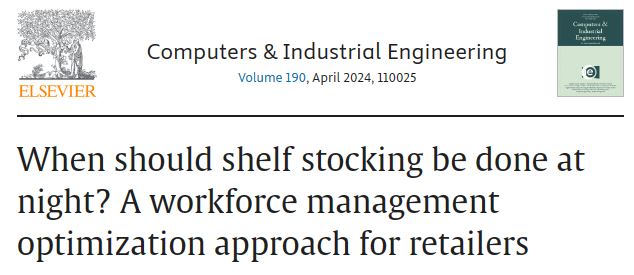Renata Muñoz, Juan-Carlos Muñoz, Juan-Carlos Ferrer, Virginia I. González, César Augusto Henao
Abstract
This research examines the economic viability of night shelf stocking in the retail industry. By analyzing real data on the costs and benefits of both night and day stocking, we propose a novel integer linear optimization model to determine the optimal structure of shelf stocker shifts for individual stores. The model is tested on a standard Chilean supermarket, with a sensitivity analysis performed on key parameters including product demands, shelf capacity, and cost factors. The results reveal that a daytime shelf stocking system is impractical and costly for high-demand outlets. We recommend combining day and night stockings, as night stocking proves to be more efficient, reducing stockouts and salary costs. Additionally, an analysis incorporating semi-night shifts as an alternative to traditional shift patterns demonstrates that combining day, night, and semi-night shift structures is the most cost-effective solution, minimizing labor and stocking expenses without compromising service quality. This study highlights the economic advantages of night shelf stocking and provides valuable insights for retailers seeking to optimize their operations.
